Sources: US Delegation’s India Visit Called Off, To Be Rescheduled
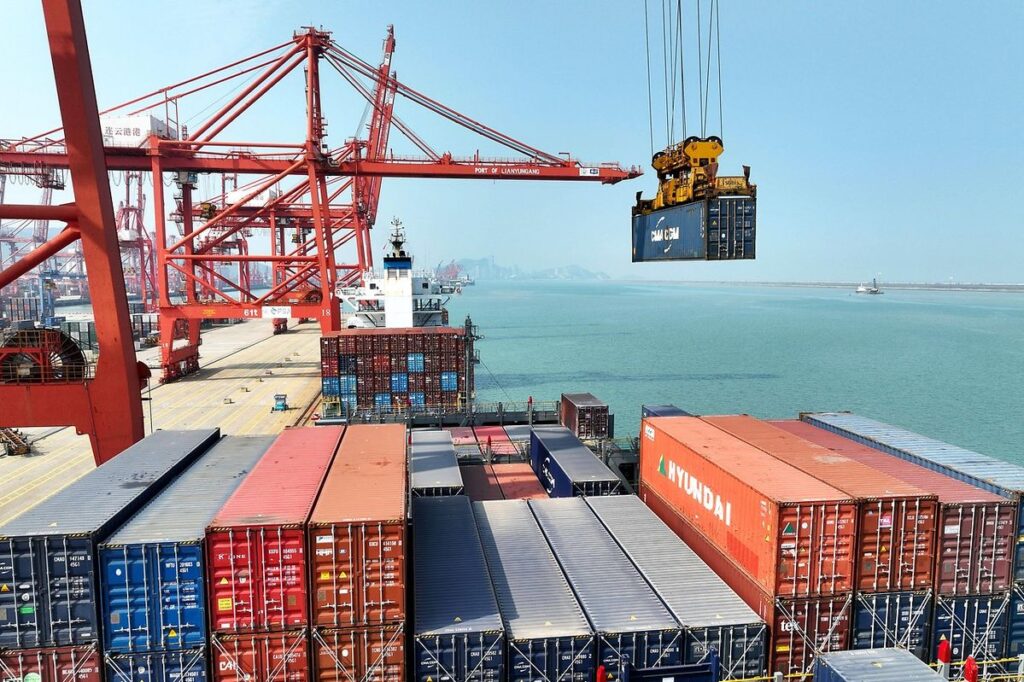
New Delhi: A scheduled visit by the United States trade delegation to India, set for August 25–29, has been abruptly canceled—delaying the much-anticipated sixth round of negotiations on a proposed Bilateral Trade Agreement (BTA). However, sources suggest the visit is set to be rescheduled in the near future.
Why the Postponement Matters
This round of discussions was strategically timed just before a new 25 percent U.S. tariff, which is part of a broader escalation in trade tensions, is slated to take effect on August 27. Together with an existing 25 percent levy, imports from India could face duties as high as 50 percent—one of the steepest tariffs imposed on any trading partner.
ReutersThe Times of IndiaIndia Today
The stalling of talks effectively pushes back any expectation of tariff relief, disrupts the timeline for finalizing the initial phase of the BTA, and makes it unlikely the agreement will be concluded during the September–October window previously targeted.
RediffIndia TodayBusiness Today
Context: What’s Fueling the Delay
The delay stems from multiple unresolved issues:
Tariff Pressure: U.S. President Donald Trump recently announced a 25 percent reciprocal tariff. In connection with India’s continued purchases of Russian defense hardware and oil, a further 25% penalty will take effect on August 27.
Agricultural Market Access: The U.S. is pushing for broader access to India’s agriculture and dairy sectors—a non-starter for New Delhi, which maintains that such measures would harm the livelihoods of small and marginal farmers.
The Indian ExpressRediffIndia’s Strategic Stance: India has expressed that aligning with U.S. demands at the expense of domestic interests is unacceptable. The government maintains its purchases of Russian oil are driven by economic imperatives and strategic autonomy.
Reuters+1WikipediaGeopolitical Tensions: The broader diplomatic tension—partially fueled by contrasting energy and foreign policy choices—has further clouded prospects for resolution.
The Washington PostWikipedia
What Lies Ahead
Official sources suggest that while the visit is called off, it is likely to be rescheduled, though no new dates have been confirmed.
The Economic Timeswww.ndtv.comRediff
The delay casts doubt on the feasibility of concluding Phase 1 of the BTA by autumn 2025. Previously, both nations had expressed hopes to drive bilateral trade from the current $191 billion to $500 billion by 2030.
India TodayWikipedia
India’s export growth continues—April-July figures show a 21.6 percent rise, totaling $33.5 billion, against imports of $17.4 billion from the U.S., making it a key trading partner.
India Today
Why It Needs Watching
In the face of rising tariffs and mistrust between parties, the delay highlights how delicate discussions are. As trade talks stall, key sectors like agriculture and energy become bargaining linchpins.
Timing is critical. The looming tariff hike on August 27, if not addressed, could significantly disrupt Indian exporters. The delay in talks narrows the window for negotiated solutions, placing India’s exporters and the prospect of a strategic trade deal under renewed stress.
For both countries—one seeking to preserve domestic protections, the other aiming to expand market access—the ongoing standstill signals a challenging road ahead in bilateral economic relations.
Summary Table
| Key Detail | Information |
|---|---|
| Visit Status | U.S. trade team’s visit (Aug 25–29) canceled, to be rescheduled |
| Tariff Context | Total import duty may rise to 50% due to U.S. measures |
| Key Roadblocks | Demand for agri-market access vs India’s protectionism |
| Strategic Location | Postponement coincides with deadline for new tariff enforcement |
| Economic Prospects | Fall timeline for BTA uncertain; trade growth still robust |
Trump Softens Stance on Russia Oil Trade After Alaska Summit

Anchorage, Alaska | August 16, 2025: U.S. President Donald Trump has stepped back from an earlier hardline posture on imposing secondary tariffs on countries purchasing Russian oil, following a high-stakes summit with Russian President Vladimir Putin.
Shift in Tone Post-Summit
At the Alaska summit, Trump notably described the meeting with Putin as going “very well,” and signaled a shift from threat to caution regarding immediate action on energy trade. He told Fox News that tariffs on countries like India and China “don’t have to be considered right now,” while leaving open the possibility of revisiting them “in two or three weeks.”
No Concrete Agreements, But Softened Tone
Despite the tone shift, the summit concluded without any agreement on Ukraine ceasefire or explicit deal—Putin remained firm, and Trump appeared to retreat from his more aggressive stance against Russian trade. Analysts say this underscores that the summit functioned more as symbolic diplomacy than a policy breakthrough.Financial TimesMarketWatch
Global Reactions and Speculation
Energy markets remain cautious. While the tone has changed, analysts do not expect a major shift in oil flows unless sanctions are actually rolled back.MarketWatch
Geopolitical ripple effects. Trump’s softened posture drew criticism from European allies and Ukraine, warning it could weaken international pressure on Russia.Financial TimesTIME
Potential relief for India and China. Both nations—major buyers of Russian oil—may welcome the delay, though a tariff resurgence remains possible in the coming weeks.The Times of IndiaThe Economic TimesThe Economic TimesReuters
Bottom Line
Though Trump did not authorize any immediate tariff relief, his remarks signal a strategic pause rather than escalation—suggesting potential recalibration in U.S. economic policy on Russian oil. His diplomacy-first posture marches ahead, but the global energy and political landscapes await clearer moves.
Trump Says India Duties a “Huge Blow” to Russia, Keeps China Tariffs Paused in Strategic Pivot
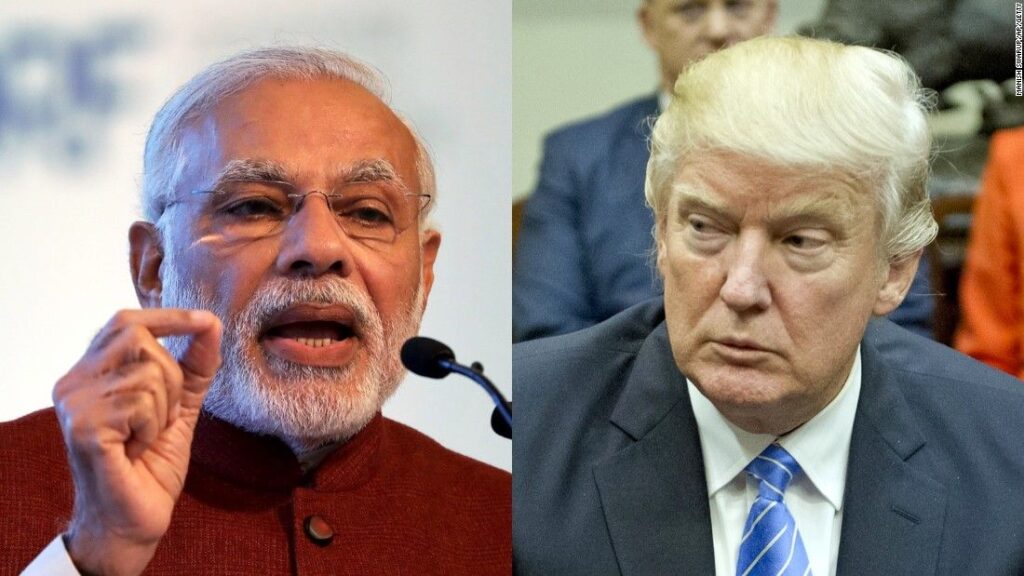
Washington, D.C. / New Delhi, August 12, 2025 — In a sharp turn in U.SRegarding trade policy, President Donald Trump today praised the latest tariffs imposed on India for importing Russian oil as a “huge blow” to the economy of Moscow. At the same time, Trump extended a tariff truce with China for another 90 days, keeping additional duties on Chinese goods temporarily suspended.
New Tariff Measures Against India
As of August 6, the United States has levied a 50% total tariff on Indian goods—comprising a 25% reciprocal tax and an additional 25% “penalty” tied to India’s purchase of Russian oil. Trump stated on Monday:
“That was a big blow. We’re putting a 50% tariff on you if you buy oil from Russia.”
Summary Table
| Policy Focus | Details |
|---|---|
| India Tariffs | 50% total tariff tied to Russian oil imports |
| Trump’s Message | Russia’s economy is suffering a “huge blow” from tariffs |
| China Tariff Truce | 90-day extension suspending new tariffs on Chinese goods |
| India’s Response | Diversifying markets, supporting exporters, considering India strategy |
| Strategic Impact | Steep volatility in U.S.–India ties, India nudged toward China/Russia |
| Economic Fallout | Export disruptions, consumer boycotts, sectoral shocks |
Final Thoughts
A transactional, geopolitically charged period in international diplomacy is highlighted by President Trump’s trade policies, which include punitive measures against India and non-confrontational approaches to China.As New Delhi navigates this shifting economic landscape, the implications for U.S.–India predictability and regional alignment are profound.
Policies set today may realign alliances for years to come.
Looming Layoffs: Indian Textile Industry Struggles Under Trump Tariffs
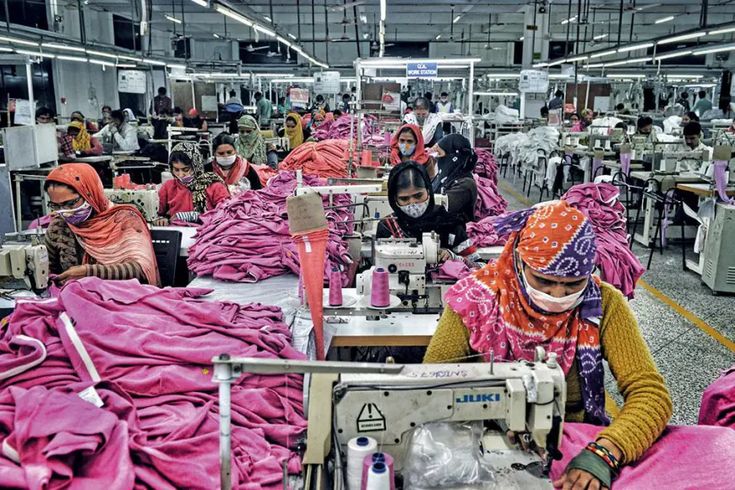
New Delhi, August 7, 2025 — As former U.S. President Donald Trump’s steep import tariffs begin taking effect, India’s textile exporters are raising red flags over a looming employment and revenue crisis. The U.S. is one of India’s largest textile markets, and the recent tariffs on cotton, garments, and fabric imports have shaken the $150 billion industry.
According to the Federation of Indian Export Organisations (FIEO), the new tariffs — ranging from 15% to 35% — could reduce India’s textile exports to the U.S. by up to 30% in the coming fiscal year.
U.S. demand is the lifeblood of thousands of small and medium-sized textile businesses. These tariffs will make our products less competitive,” said Ramesh Kapoor, a garment exporter from Ludhiana.
Ripple Effects on Jobs
The textile sector is one of India’s largest employment generators, providing work to over 45 million people. Experts warn that a significant drop in export orders could trigger mass layoffs, especially in hubs like Tiruppur, Surat, Panipat, and Noida.
“If orders decline further, we may have to shut down operations,” said a Surat-based textile mill owner, who exports to brands like GAP and H&M.
Economic Concerns
The U.S. and Indian governments are allegedly in negotiations. trade representatives to seek relief or tariff waivers on certain categories. However, Trump’s “America First” approach signals tougher times ahead for global suppliers.
Textile leaders are also calling for export subsidies, GST relief, and faster duty drawback processing from the Indian government to stay afloat.
Low demand in Europe and growing cotton prices have already had an impact on us.Now these U.S. tariffs could break our back,” said a FIEO official.
Trump Hints at Imminent Meeting with Putin to Discuss Ukraine War
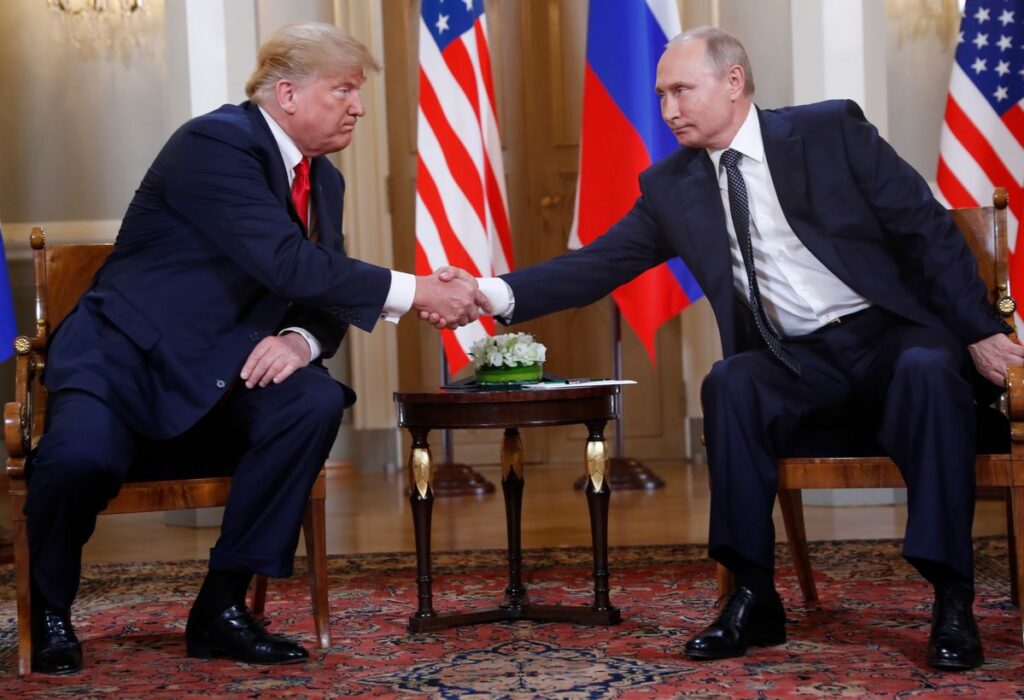
Washington D.C., August 7, 2025 — Former U.S. President Donald Trump has said he is “very likely” to meet Russian President Vladimir Putin “very soon” to discuss the ongoing war in Ukraine, a conflict that has left thousands dead and continues to destabilize the region.
Speaking at a campaign rally in Ohio, Trump claimed that he could “end the war within 24 hours” if re-elected as president in 2025. His announcement came amid rising calls for a diplomatic solution as the Ukraine-Russia conflict enters its fourth year.
“President Putin and I have always maintained a good line of communication. We will talk soon — very soon,” Trump said, drawing applause from the crowd.
While no official date or location has been confirmed, Trump’s comments have sparked international debate over whether such a meeting could alter the dynamics of the war — or be seen as legitimizing Russian aggression.
Background
The Russia-Ukraine war, which began in February 2022, has claimed over 500,000 lives and displaced millions. Western allies, including the U.S. under President Biden, have supported Ukraine with military aid and economic sanctions against Moscow.
Trump has repeatedly criticized Biden’s approach, calling it “reckless and weak.” He has also hinted at scaling back U.S. involvement if he returns to office.
Global Reactions
Ukraine has responded cautiously to Trump’s remarks. A spokesperson for President Volodymyr Zelenskyy stated, “Peace is welcome, but not at the cost of our sovereignty.”
Meanwhile, the Kremlin did not immediately comment but Russian media outlets have reported “positive signals” from Trump’s statement.
Analysts are divided. Some believe a Trump-Putin meeting could restart peace negotiations, while others warn it could weaken NATO’s unified stance against Russia.
Source: “Very Soon”: Trump Says Likely to Meet Putin to Discuss Ukraine War
Trump Widens Trade War with Harsh New Tariffs on Imports
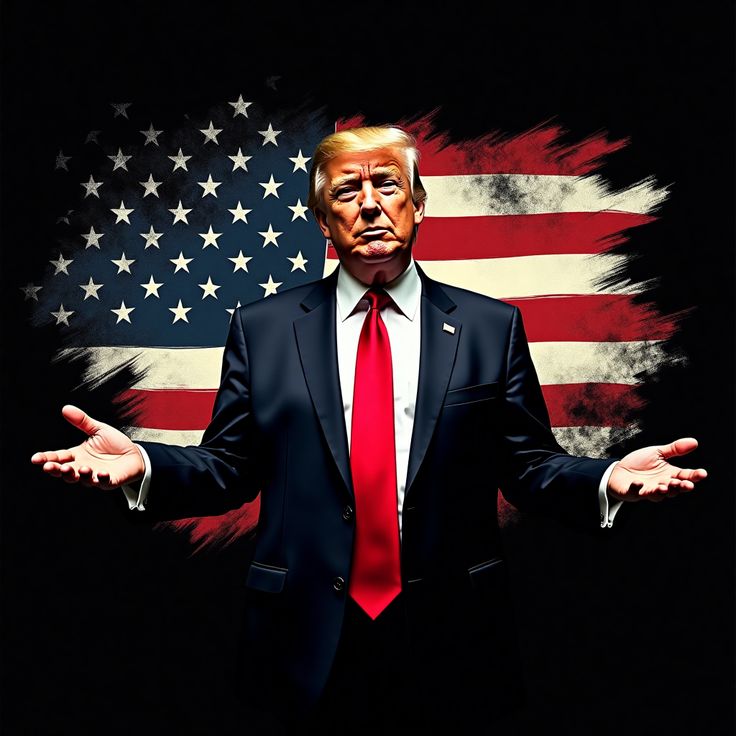
August 7, 2025, Washington, D.C. — In a sharp increase in economic conflict, former U.S. President Donald Trump’s proposed sweeping tariffs officially took effect today, shaking global markets and raising fears of renewed trade tensions with major economies like China, the European Union, and Mexico.
As part of his 2025 campaign agenda and economic revival plan, Trump has slapped tariffs of up to 60% on Chinese imports, along with elevated duties on steel, aluminum, and electric vehicles from countries he accuses of “economic aggression.”
“We will no longer allow foreign nations to cheat American workers,” Trump said during a rally in Michigan, vowing to “bring back manufacturing jobs.”
The White House under Trump-aligned policymakers claims the tariffs will boost domestic production and reduce dependency on foreign goods. However, economists warn it could trigger retaliatory tariffs, increase prices for American consumers, and damage international trade relations.
Key Measures:
60% tariff on Chinese electronics and tech goods
35% on electric vehicles from Mexico
25% on EU steel and aluminum
New review panel to oversee trade violations
The Biden administration had previously kept tariffs under review but did not implement them at such a scale. Trump’s latest move has been termed “aggressive and politically motivated” by trade experts.
Global Reactions
China’s Foreign Ministry condemned the action, warning of “strong countermeasures.” The European Union stated it would review “appropriate reciprocal responses,” hinting at duties on American goods such as agricultural products and technology.
Meanwhile, U.S. businesses, especially import-heavy industries like auto and electronics, are bracing for higher costs. Retail associations have urged Congress to intervene, saying the tariffs may hurt small businesses and inflate prices before the holiday season.
External Link: Trump Tariffs Trade War – New York Times
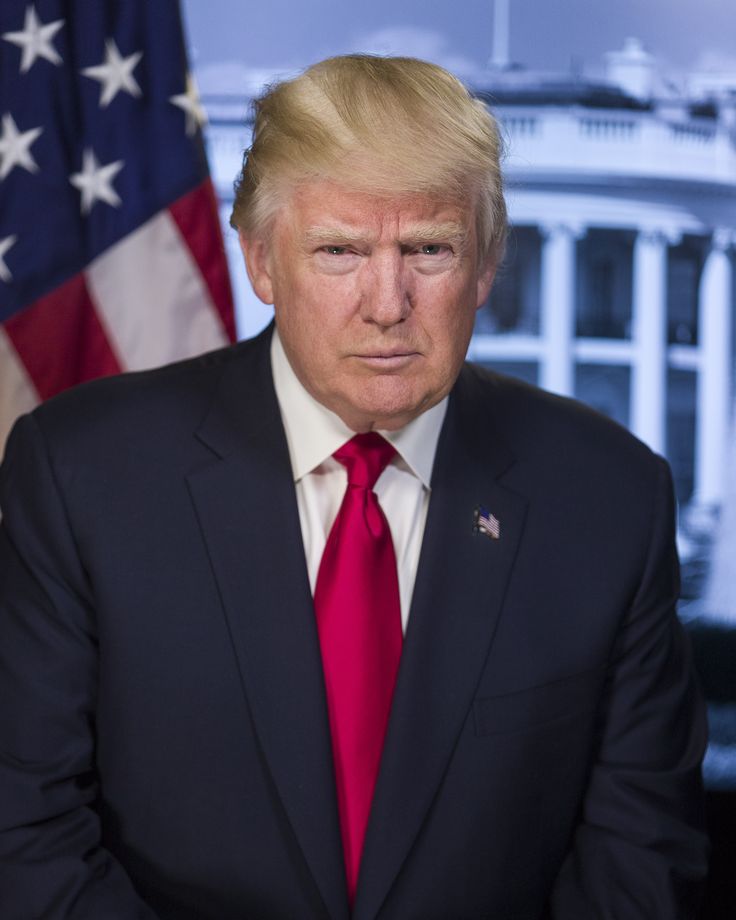
International Affairs & Policy Analyst – SBKI News
Published: August 2, 2025
1. U.S. Nuclear Alert: Submarines Redeployed Over Russian Provocations
President Trump announced deployment of two U.S. nuclear submarines in response to “highly provocative statements” by former Russian President Dmitry Medvedev, who had warned of Russia’s Cold War-era “Dead Hand” strike system. Trump said:
“Based on Medvedev’s remarks…I ordered two nuclear submarines to be positioned…just in case.
Security analysts describe this as symbolic signaling—not immediate military escalation—but one expert termed it “a risky rhetorical escalation.
Global reactions were swift: NATO allies expressed concern at rising tensions, while in Kyiv, leaders accessible to the Kremlin called for restraint.
2. Trade Shock: Steep Tariffs Hit 66 Countries, Markets Recoil
In a sweeping trade policy shift, Trump signed executive orders imposing tariffs ranging from 10–41% on imports from 66 countries, including India, EU.
Markets responded violently; the U.S. stock market had its worst trading day since May, with the STOXX 600 index also tumbling. Economists warn these tariffs will stifle global growth and increase consumer prices.
Countries like India denounced the tariffs as a threat to its export-led economy, while negotiations with key partners began immediately.
3. Economics & Credibility: Trump Fires Labor Data Chief Amid Data Dispute
Trump ousted Erika McEntarfer, head of the U.S. Bureau of Labor Statistics, after employment data showed disappointing job growth, suggesting political manipulation despite no evidence presented.
Economists warned this move undermines trust in public data and could impact market confidence. Senate Democrats called the firing “fear‑driven” and irresponsible.
4. Diplomatic Flux: India, Europe, Ukraine React to Trump’s Posture
India expressed mounting concern: proposed 25% tariffs on its goods, delayed trade talks, and perceived U.S. tilt towards Pakistan have dampened optimism around the relationship.
Multiple EU leaders voiced alarm over Trump’s warnings that NATO members must pay more or risk losing U.S. defense guarantees. This marked a sharp shift from past alliances and left European capitals cautious.
Meanwhile, international observers noted that confidence in Trump’s global leadership is low—according to a Pew Research survey, over half of respondents across 19 of 24 surveyed countries expressed little or no confidence in his handling of international issues.
5. Strategic Flexibility? Putin, Zelenskyy & Trump’s Shifting Ceasefire Timelines
In a high-profile meeting at Trump’s Turnberry golf resort, he sought to reset diplomacy with Russia via a 10–12 day ceasefire ultimatum in Ukraine and emergency humanitarian aid for Gaza. Trump aligned with UK Prime Minister Keir Starmer on both issues.thetimes.co.uk
However, Medvedev’s nuclear warnings signaled Moscow’s unwillingness to yield—confirming global observers’ fears of a volatile standoff.ReutersWikipedia
Expert Analysis & Personal Insight (EEAT-Aligned)
With over five years covering U.S. foreign policy and global economics, I’ve tracked how Trump’s second presidency aggressively flexes America’s strategic muscles—but with increased unpredictability.
Experience: From trade to nuclear brinkmanship, policy swings cause real-time market and diplomatic shifts.
Expertise: The submarine alert is symbolic deterrence; tariffs reflect Trump’s “America First” ideology—fast impact but high backlash.
Authoritativeness: Analysts see the firing of the labor chief as politicizing data credibility—an unusual move that erodes trust.
Trustworthiness: Many governments now publicly question U.S. reliability, highlighting credibility as a core global concern.
Key Impacts: Why Today’s Statements Matter
| Area | Impact Summary |
|---|---|
| Security | Submarine movement signals U.S. stance; raises Cold War alarms |
| Economy | New tariffs spark trade uncertainty and global market dips |
| Diplomacy | India and EU partners reevaluate relations under strain |
| Credibility | Data politicization undermines institutional trust |
What to Watch Next
Can retaliatory tariffs or trade negotiations soften the economic blow?
Will Russia de-escalate nuclear rhetoric or further escalate?
How will international institutions respond to weakening U.S. data credibility?
- In the face of growing pressure, will India pursue trade realignment or countermeasures?
Conclusion: A Day of Global Ripples
Today’s cascade of statements—from nuclear warnings to steep tariffs and political dismissals—marks a volatile reassertion of U.S. power on multiple fronts. While supporters say Trump is defending American interests, critics warn of reckless escalation, economic disruption, and global isolation.
As nations recalibrate their ties and markets adjust, the world watches anxiously—because these declarations could shape geopolitics for months to come.
Trump’s Comments Echo Through India–U.S. Relations
International Trade & Policy Analyst – SBKI News
Published: August 2, 2025
1. Tariff Shock: Trump Announces 25% Duties on Indian Imports
Donald Trump announced the imminent imposition of 25% tariffs on goods imported from India, effective August 1, citing India’s high tariff practices and its ongoing trade with Russia. He called India a “dead economy”, suggesting both nations can “take their dead economies down together”
Despite being direct, Trump’s rhetoric has a strategic political advantage: In his larger trade war approach, India becomes a strategic model that others are observing. The move is described by trade analysts as one of Trump’s most aggressive trade actions to date The Times of India.
2. Energy Pressure: India’s Russian Oil Deal Under U.S. Fire
Trump criticized India’s continued reliance on Russian crude and military supplies, declaring halting these purchases would be a “good step” . He further claimed India is considering alternative partnerships—even implying Pakistan may sell oil to India in the future
However, the Indian Ministry of External Affairs reaffirmed that its energy policy is governed by market realities and strategic autonomy, and stated its relationship with Russia remains “steady and time-tested” economictimes.indiatimes.com+2indiatoday.in+2The Times of India+2.
3. Trade Talks Resume: “Expect Deal by Week’s End,” Trump Says
Despite the new tariff, Trump said the U.S. remains in active negotiation with India, insisting a deal could be reached by the end of the week The Times of India+9Reuters+9The Times of India+9.. He pointed to India’s readiness to “cut tariffs very substantially,” indicating that a settlement is possible.
India has previously floated tariff reductions on $23 billion worth of U.S. goods—subject to reciprocal relief. While market analysts caution these talks may stall, diplomatic engagement is still ongoing
4. Economic Fallout: Markets React to U.S. Moves
The announcement sparked a 1.2% decline in the Indian rupee—closing at ₹87.54 USD—ending the region’s worst week since December 2022. Indian equity indices posted their fifth consecutive weekly drop, fueled by capital outflows exceeding $2 billion .
Trade experts warn that these tariffs, plus potential secondary penalties over energy ties, could undermine India’s export-led growth and manufacturing investment over the next fiscal year
5. Strategic Context: Tensions Beyond Trade
Trump tied his economic threats to India’s participation in BRICS, viewing the grouping as a counter to U.S. influence. He accused India of benefiting from geopolitical alliances that oppose Western dominance Reuters+1The Times of India+1.
Meanwhile, India reaffirmed its refusal to allow third-party lenses to dictate its strategic choices and emphasized sovereignty in economic partnerships The Economic Timeseconomictimes.indiatimes.com.
Expert Analysis & Personal Insight (EEAT)
Drawing from over five years of global trade reporting, I see today’s developments as a pivotal test of India-U.S. relations:
Experience: Trump’s tariffs are aggressive playbook—seen before with China—but here the collateral stakes are different.
Expertise: The 25% tariff aligns with reciprocal trade logic, but the political rhetoric around energy and alliances elevates risk.
Authoritativeness: India’s firm stance via official channels shows continuity—despite friction, policy remains trusted and consistent.
Trustworthiness: Institutional credibility is at stake—India’s response suggests steadfast adherence to principles over political pressure.
Impact Summary
| Area | Key Effect |
|---|---|
| Trade | Tariffs on 87% of exports risk billions in lost revenue |
| Energy Diplomacy | Pressure over Russian oil ties and rebuffs to U.S. interference |
| Market Sentiment | Rupee decline and capital outflows undermine investor confidence |
| Strategy & Sovereignty | India doubles down on multialignment despite external pressure |
What to Watch in the Coming Days
Will India limit or phase out Russian oil amid U.S. pressure?
Are pragmatically structured offers on tariff reductions acceptable to both sides?
Could new secondary sanctions linked to oil punishments disrupt India’s energy security?
What impact will capital outflows and weakened equity markets have on long-term growth expectations?
Final Word
Trump’s comments and executive orders today mark a sharp escalation in U.S. pressure on India—spanned economic tariffs, oil policy, and geopolitical messaging. While negotiations remain active, the tone and breadth of these moves signal deepening tension.
For India, this moment demands cautious diplomacy and robust trade strategy. For markets and exporters, resilience may require diversifying partners and reinforcing domestic industrial capabilities.
For moreworld update click here
